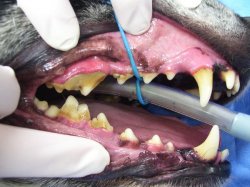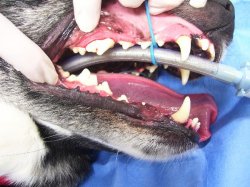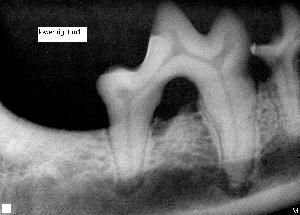When your pet comes in for a dental cleaning and oral examination, he or she will be escorted to our kennel area and have their blood drawn for pre-anesthetic bloodwork. Once we have those results we can determine the safest anesthetic protocol for your pet. A sedative is given and an IV catheter placed to allow intravenous access for medication or fluids as needed during their procedure. Your pet will then be put under anesthesia and an endotracheal tube placed to protect his or her airway during dental cleaning. As always, we put your pet’s safety first (see surgical FAQ’s for more information on anesthetic safety).
Once your pet is anesthetized we can scale the tartar off of his or her teeth with an ultrasonic scaler and fully examine the gingiva (gums), all surface of the teeth and better assess their dental health. Probing the gingiva is very important, as the tooth beneath the gumline can be likened to the portion of an iceberg beneath the ocean. The exposed portion of the tooth can look great, but if the tooth beneath the gumline is diseased, it’s not a healthy tooth. The teeth are then polished, which is a vital step that anesthesia-free dentals skip. Polishing smooths the tooth’s surface, which makes it harder for bacteria to adhere, thus slowing the buildup of plaque and tartar.
We often take pictures of your pet’s mouth before and after the cleaning. These are added to your pet’s medical record and we also send home a copy with you. These pictures give you a clear view of your pet’s mouth, which can be hard to see when they are awake. Below you can see a before (left) and after (right) picture.



